Travel
The hills are alive: the Italian mountain resort of Cortina d’Ampezzo
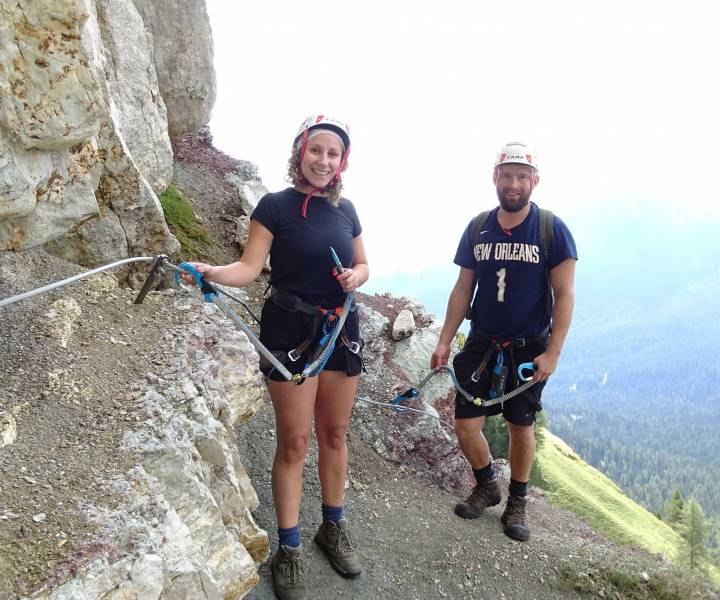
The Italian mountain resort of Cortina d’Ampezzo fills the lungs with fresh air and the tummy with delicious food, discovers Laura Rowe
This isn’t my first time in the Dolomites, but it is my first time here without my skis on. I haven’t left them at the bar, though, rather I’m visiting the ‘queen’ of the region, Cortina d’Ampezzo, out of season. The mountains are green rather than white, and I’ve swapped my salopettes and thermals for shorts and hiking boots. Only a two-hour drive from Venice, Cortina is uniquely positioned for a long weekend, whatever the weather.
Unlike most mountain resorts, the town is spread across a wide valley and has more than 300 shops covering everything from luxury fashion, activewear and cashmere, through to local crafts including ornate filigree jewellery and tarkashi wood carving. There’s plenty to feed the soul – including art galleries, a paleontology museum and an astronomical observatory – but I’m here to feed my stomach.
Our first stop is the Lovat pastry shop, which opened in 1928. We grab a table overlooking the piazza and tuck into puccia, an aromatic bread specific to the region, made with rye and flecked with fennel seeds. It’s stuffed with another local speciality, speck (cured, lightly smoked pork), and its fat melts into the warmed bread. For afters, there’s a fat slice of Sachertorte, a nod to Cortina’s Austrian heritage, and the chocolate cake is sandwiched with apricot jam and draped in dark chocolate icing. The plump little birds that lurk in waiting enjoy the last crumbs. It gives us just the spike of energy we need to start exploring.
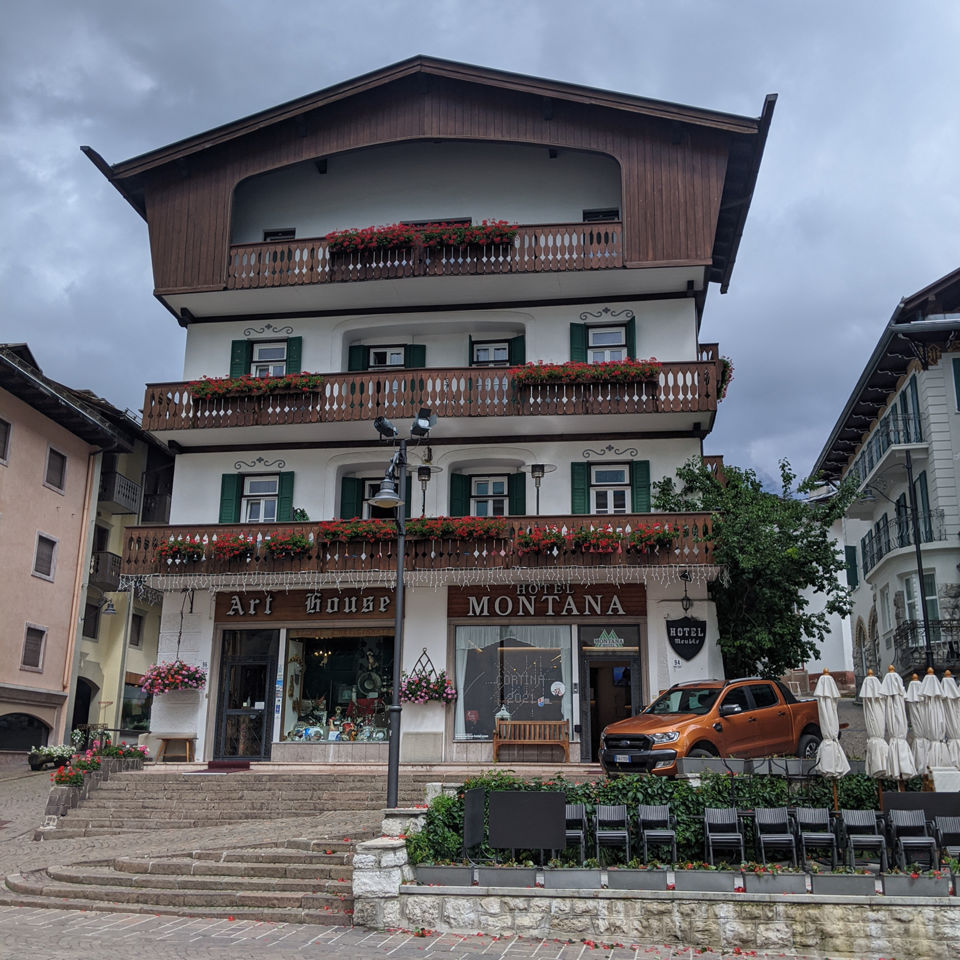
As we meander through the pretty streets, drinking in the mountain air and listening to the roar of the arctic-blue Boite river that cuts through the town, we discover locals’ favourite Bar Sport and settle down to one of its craft beers and salty crisps as we plan the next day. As home of the Winter Olympics in 1956, the FIS Alpine World Ski Championships in 2021 and the Winter Olympics due to take place in 2026, it would be rude to be too sedentary. We decide to book ebikes (snowservice.it) for the next morning.
First, though, dinner, and we head to Dolom’Eats, where the menu is inspired by the traditional Ladin recipes of Nonna Teresa. We work our way through antipasti that includes fried ravioli known as tutres, which are stuffed with spinach, ricotta and mountain herbs, but I’m really here for the casunziei all’ampezzana.
These half-moon ravioli are filled with a vibrant mix of beetroot and ricotta and come bathed in butter, grated parmesan and crunchy poppy seeds. They’re addictively good and well matched with a fruity Lagrein red, a grape variety native to the valleys of South Tyrol. Unsurprisingly, we slope straight off to bed, in the comfortable and cosy family-run Montana Hotel, a short walk away. We’re advised that the weather is generally best in the morning and can turn in the afternoon.
With this in mind, we’re up and at ’em as early as our Italian wine haze will allow and take a quick seat on the heated hotel terrace for coffee, where we watch the morning mist rise up the mountains; our conversation broken by the chimes of the Roman Catholic basilica opposite.
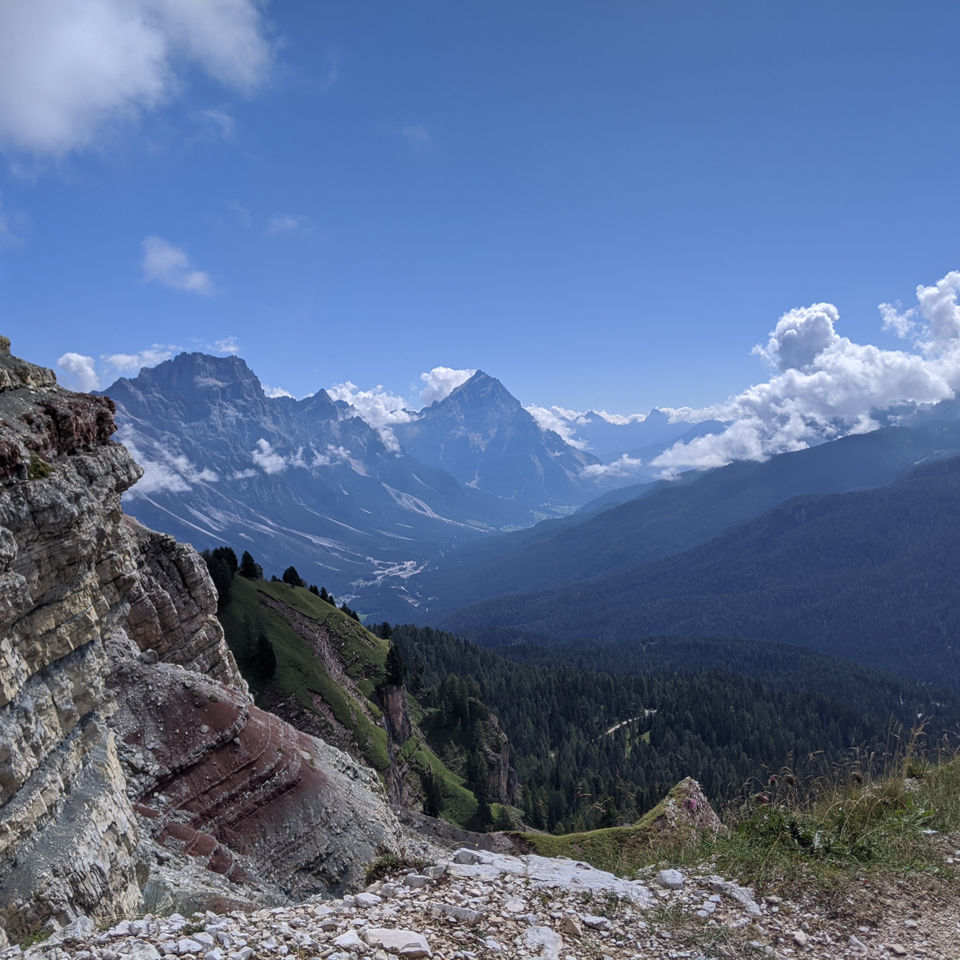
The beauty of electric bikes is that they make light work of even the steepest routes (and I say this as a weak-kneed, chronic moaner), which are all clearly labelled by ability level, much like the snow slopes in winter. The little exertion is worth it though. We speed through tunnels, whizz past waterfalls, climb alongside docile donkeys and grazing cows whose bells reverberate through the valleys, to reach Sennes, which is 2,126m above sea level. On our route back down, winding through trees, we spot meadows blanketed with crocuses, a marmot popping its head out of its secret burrow, and even a baby frog the size of a fingernail.
We reward ourselves with a bombardino – hot, velvety Advocaat and brandy, topped with squirty cream – at Malga Ra Stua and fly down the rest of the mountain. Aforementioned creaky joints are soothed at the Faloria Spa Resort, where you can spot the famous 1950s Trampolino Olimpico ski jump. The spa is about as stylish as they come. A swim, sauna, jacuzzi and couple’s massage later and we’re aching for dinner.
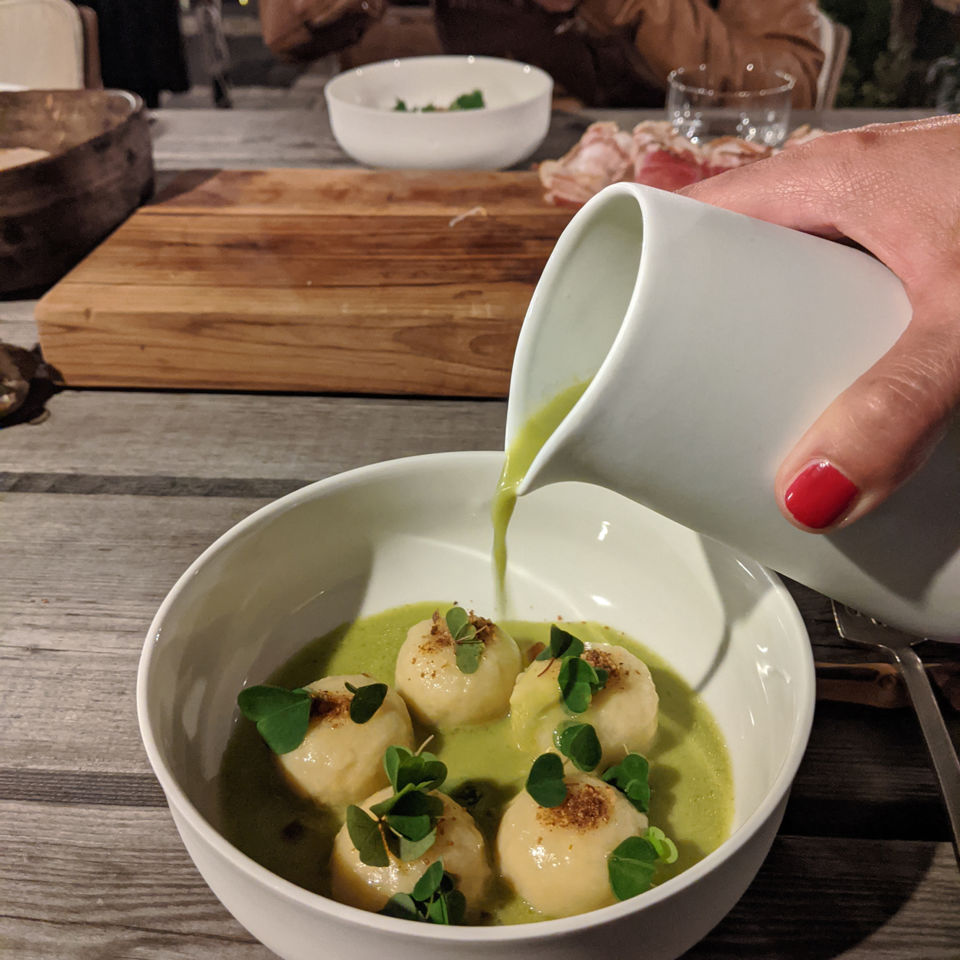
This time we head out of the town centre – a 15-minute drive, or a few hours’ hike if you go for lunch – to one of the region’s traditional 15th-century rifugios (mountain huts), Ospitale. The restaurant is home to a menu of thigh-slapping local comfort food. We start with venison carpaccio with cranberry jam and a hug-in-a-bowl goulash, along with glasses of crisp Prosecco. More pasta comes in the form of golden tortello filled with sauerkraut, dressed in mustard butter and topped with lardons and a cloud of grated parmesan.
Kaiserschmarren (otherwise known as Emperor’s Mess), another happy Austrian influence, is essentially pancake scraps, here dusted with icing sugar and served with raisins and jam. If that wasn’t enough to finish us off, a nip of milk grappa (like a shot of boozy evaporated milk) does the job. Aside from carbs, the area is also well known for being home to a network of hiking routes and via ferratas (aka ‘iron paths’) that allow you to climb the peaks safely. We take a guide, the brilliant Enrico Maioni (from guidedolomiti.com), on some ‘easy’ routes and break through the cloud to blue skies.
I feel like Maria in The Sound of Music, and then I get to enjoy more of my favourite things (pasta and beer) at Rifugio Dibona. This time it’s tagliolini with local blueberries, mascarpone and speck, and twirls of garganelli with crumbled sausage and radicchio.
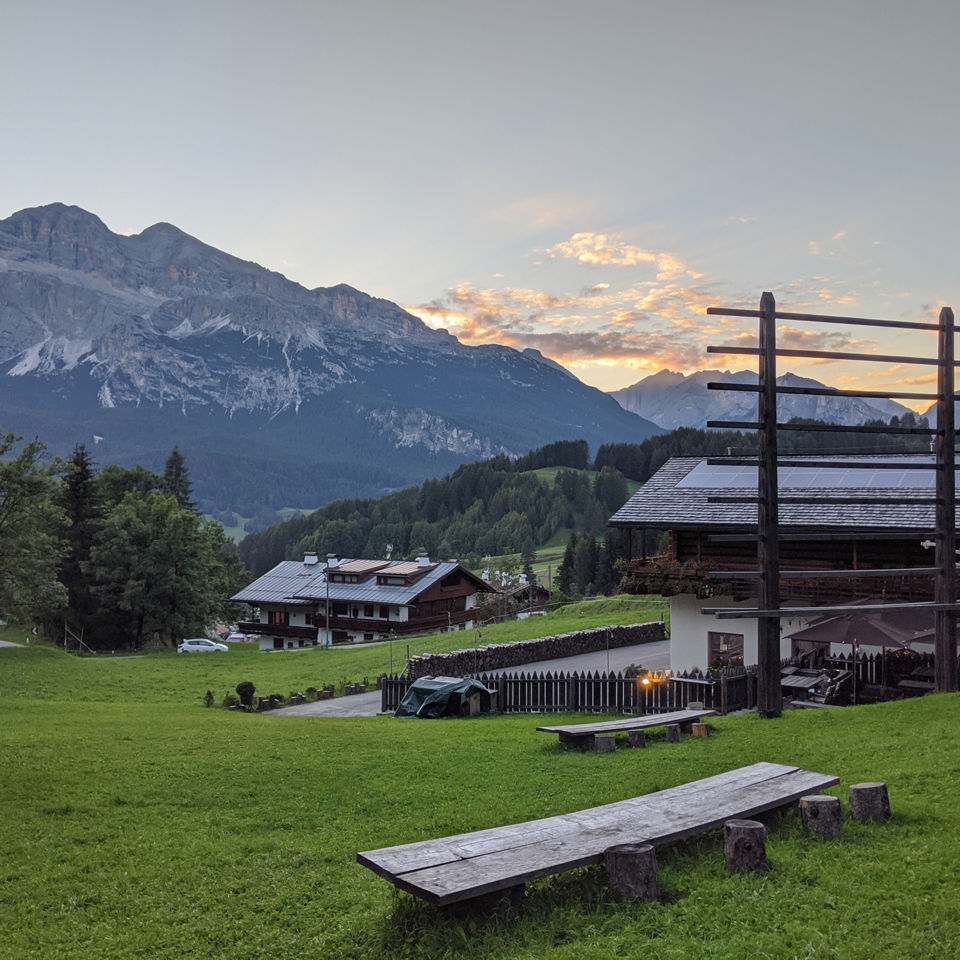
The Cinque Torri rock formation is worth visiting to watch those that dare to climb its five towers. History buffs can also explore the trenches and observation posts on the ground left by Italian troops. Its rifugio, too, is a great place to stop for thick hot chocolate and ricotta strudel, another Cortina classic. If all that sounds a bit much, you could just stay in the town and drink negronis in the sunshine – La Suite’s your best bet for pints of the stuff.
For our final meal of the trip, we want something special, to make the most of the enrosadira, a unique phenomenon in the Dolomites which sees the peaks turn pink at dusk and dawn due to the minerals in the mountains. We take a seat on the terrace of SanBrite, wrapped in blankets, to watch the sunset. It’s the home of chef Riccardo Gaspari, and wife Ludovica, where they pay homage in an exciting and experimental way to Riccardo’s family farm and dairy.
To a soundtrack of jazz, crickets and occasionally grunting deer, we start with butter whipped like gelato with two types of homemade bread, and platters of home-cured hams and Riccardo’s family cheeses made on site. We try the softest clouds of gnocchi, stuffed with aged curds, bobbing in a sauce of mountain herbs, as we’re poured orange Gewürztraminer, made in the region, which smells like honey and orange blossom. We can’t leave without a shot of hay grappa, embracing its natural sweetness and toasty warmth.
I’m full, but not just with pasta and cake, good wine and potent spirits. I’m full of Alpine air, I’m free from a cluttered mind, and I’m raring for more adventure. I could get used to this mountain life, dodgy knees or not.
How to book
Rooms at Hotel Montana start from €78 for a double room bed and breakfast (cortina-hotel.com). There is a daily bus service to and from Venice Marco Polo Airport and Mestre train station. For more information visit dolomiti.org/en/cortina.












